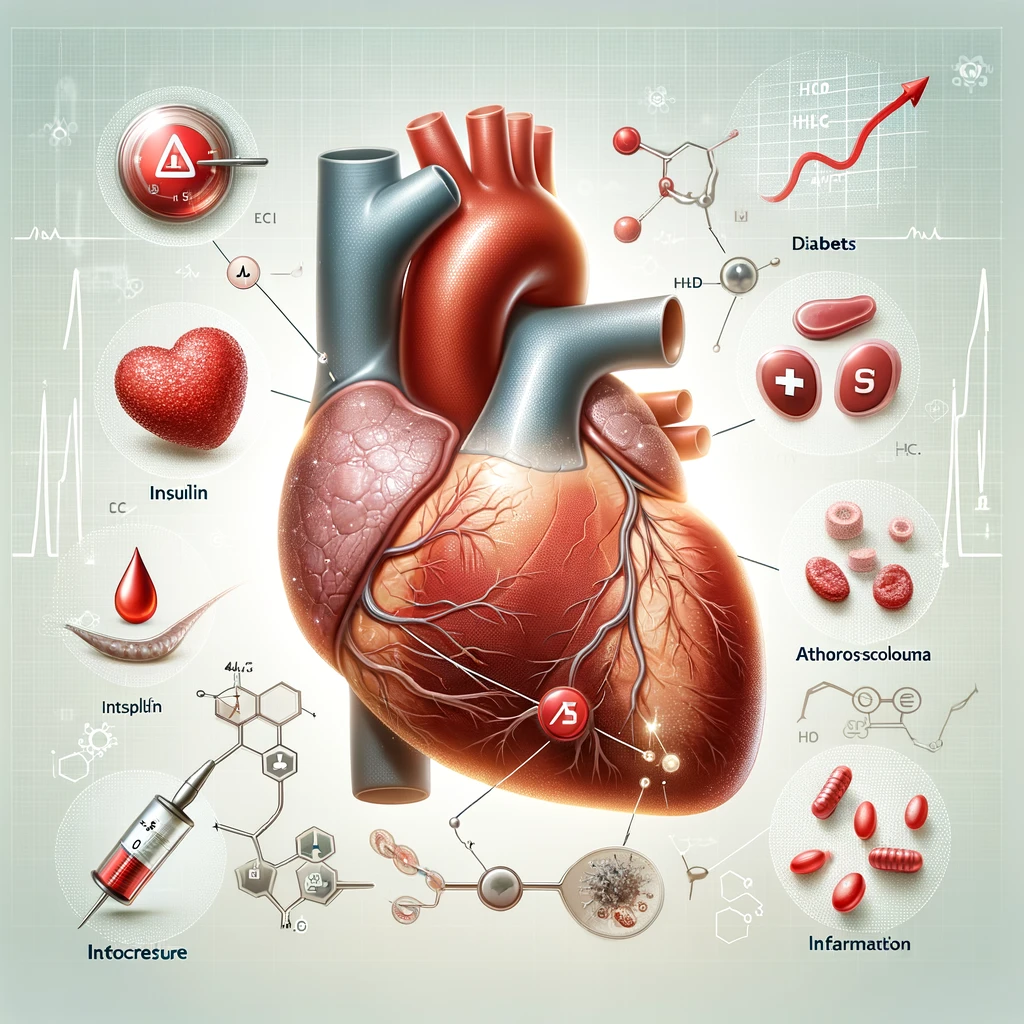The Shocking Connection Between Diabetes and Heart Disease
When people think of diabetes, they often focus on blood sugar management as the primary health concern. However, there’s a much larger and more alarming issue at play: the strong connection between diabetes and heart disease. For individuals managing diabetes, the risk of developing cardiovascular complications is not just a possibility—it’s a statistical reality.
The Alarming Diabetes-Heart Disease Link
According to the American Heart Association, adults with diabetes are twice as likely to die from heart disease or stroke compared to those without diabetes. In fact, heart disease is the leading cause of death for people with type 2 diabetes. The high blood sugar levels associated with diabetes can damage blood vessels and nerves over time, which contributes to cardiovascular complications. Additionally, many people with diabetes also experience conditions like high blood pressure and high cholesterol, compounding the risk.
But the most preventable—and often overlooked—factor? Sodium intake.
Excess sodium consumption increases blood pressure, which is a primary risk factor for both heart disease and stroke. Alarmingly, the average American consumes over 3,400 milligrams of sodium per day, far exceeding the recommended daily limit of 2,300 milligrams—and for those with heart or kidney concerns, the ideal limit is 1,500 milligrams. For individuals with diabetes, who are already at a heightened risk for heart disease, sodium reduction isn’t optional—it’s essential.
Why the Traditional Meal Planning System Fails
Managing diabetes and heart health often feels like a full-time job. Patients are told to monitor carbs, sodium, and fat while increasing fiber and staying hydrated. Unfortunately, the resources many people rely on—generic meal plans, overly complex diet advice, or pre-packaged meals—can fall short of addressing their specific needs. Processed foods labeled as “healthy” are often hidden sources of excess sodium, and navigating food labels at the grocery store can be overwhelming.
This is where RecipeShop.net steps in to simplify the process, bridging the gap between complex dietary advice and real-world, actionable solutions.
How RecipeShop.net Makes Healthy Eating Simple
RecipeShop.net was born from a family’s personal journey to manage diabetes and heart health. Its mission is simple: to provide delicious, shoppable recipes that meet the specific needs of those managing diabetes and heart health. Here’s how Recipe Shop transforms the way people eat:
1. Low-Sodium, Low-Carb Recipes
RecipeShop.net’s recipes are tailored to help users stay within the daily sodium and carbohydrate limits recommended for diabetes and heart health. By focusing on fresh, whole ingredients and reducing reliance on processed foods, the recipes are designed to provide maximum flavor without compromising on health.
2. Shoppable Convenience
One of the most unique features of Recipe Shop is its shoppable recipes. Users can browse recipes, select meals that fit their needs, and instantly add all the required ingredients to their grocery cart for delivery or pickup. This removes the guesswork from grocery shopping and helps users avoid impulse purchases of high-sodium processed foods.
3. Practical Nutritional Support
Each recipe on RecipeShop.net includes detailed nutritional information, so users can confidently track their sodium, carb, and calorie intake. This transparency empowers individuals to make informed decisions about what they eat.
4. Time-Saving Meal Planning
With shoppable recipes, meal planning becomes quick and stress-free. Users no longer need to spend hours researching recipes, checking labels, and creating grocery lists. Recipe Shop does the heavy lifting, leaving more time for what matters most.
The Impact of Dietary Changes
Studies show that reducing daily sodium intake by just 1,000 milligrams can significantly lower blood pressure, reducing the risk of heart disease and stroke. Combined with a diet that controls carbohydrates and prioritizes nutrient-rich ingredients, these changes can greatly improve the quality of life for individuals managing diabetes.
By making it easy to incorporate these changes into daily life, RecipeShop.net empowers users to take control of their health. It’s not just about providing recipes—it’s about providing a path forward for long-term wellness.
Real-Life Example: How Recipe Shop Changes Lives
Take Mary, for example. Diagnosed with type 2 diabetes and struggling to control her blood sugar levels, she also received a concerning diagnosis of early-stage heart disease. Meal planning felt overwhelming—until she discovered RecipeShop.net. By following the platform’s low-sodium, low-carb recipes, Mary not only managed to stabilize her blood sugar but also saw improvements in her blood pressure. The shoppable recipes saved her time and helped her stick to a healthier diet, giving her more energy to enjoy life.
A Call to Action
The connection between diabetes and heart disease is clear, but the solution doesn’t have to be complicated. RecipeShop.net is here to make healthy eating simple, accessible, and delicious. Whether you’re managing diabetes, preventing heart disease, or simply striving for a healthier lifestyle, Recipe Shop offers tools and resources to transform your diet and your health.
Visit www.RecipeShop.net today to explore how easy meal planning can be. It’s time to take control of your health—one meal at a time.









